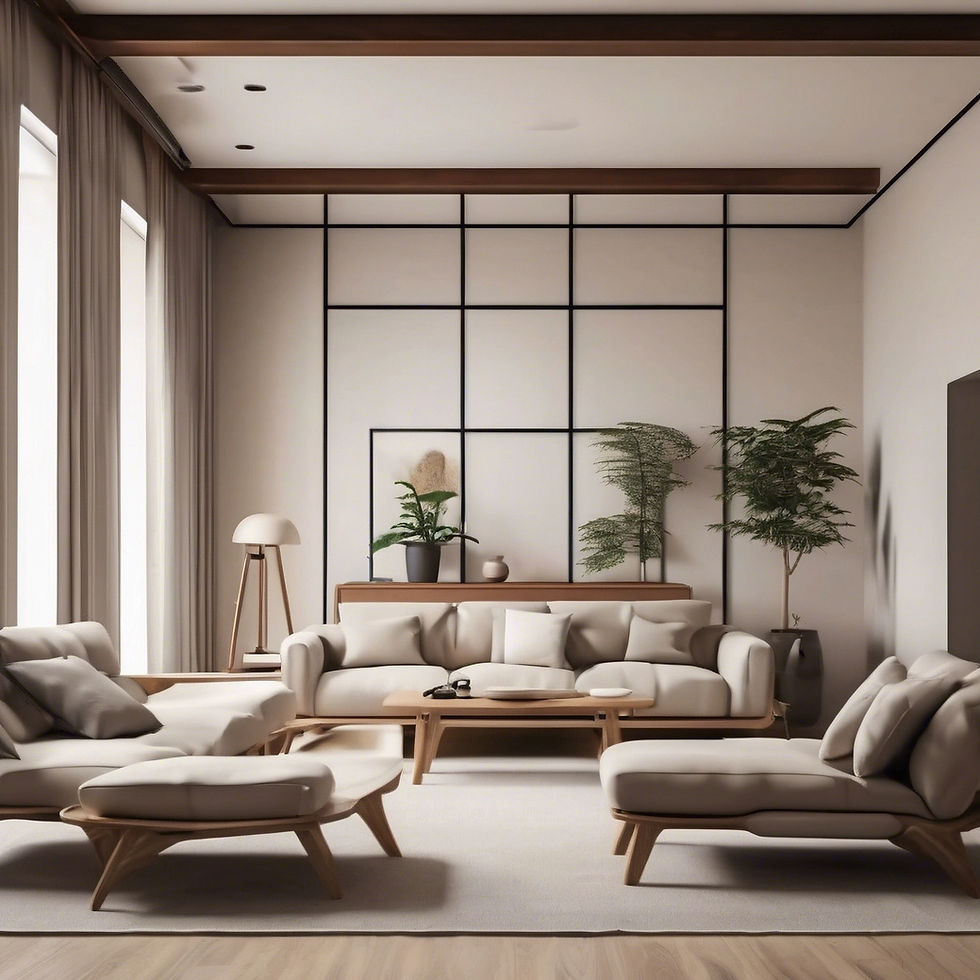Unveiling the Beauty of Japandi Interior Design: Captivating Color Palettes, Serenity, and Incorporating Boho Art for Personal Touch
- Bryan Borg
- 3 days ago
- 3 min read
Japandi interior design beautifully combines Japanese minimalism with Scandinavian functionality. This stylish approach highlights simplicity, natural materials, and calming color palettes that create peaceful spaces perfect for relaxation and mindfulness. For architects, interior designers, home decor lovers, and art enthusiasts, grasping the essentials of Japandi design can turn any living area into a serene haven.
What is Japandi Design?
At its heart, Japandi design fuses the core philosophies of Japanese and Scandinavian aesthetics. Japanese design focuses on simplicity, natural elements, and a Zen-like ambiance. In contrast, Scandinavian design prioritizes functionality, clean lines, and a cozy feel. This blend creates environments that not only look stunning but also enhance daily life, promoting harmony and contentment.
The essence of Japandi is captured in its minimalist approach. The guiding principle is that "less is more." This philosophy allows every item to shine and play a role in the overall decor.
Distinct Color Palettes
Color is vital in Japandi design, leaning toward subdued and natural shades to foster tranquility.
Typical colors include soft whites, muted greens, grays, earthy browns, and occasional pastels. These hues mirror the natural world, providing a gentle backdrop that supports moments of mindfulness.


A balanced color palette establishes cohesion throughout your space. To effectively incorporate Japandi colors, begin with a neutral base like beige, soft gray, or white. From there, add accent colors inspired by nature—such as sage green or terra-cotta brown—that enrich the overall calming effect.
Research shows that using soft colors can lower stress levels by up to 30%, making it even more beneficial to implement these color choices.
The Psychology Behind Japandi Design
Understanding the psychological benefits of Japandi design is key to crafting spaces that nurture well-being. The minimalist approach encourages decluttering of the mind, vital in today’s hectic environment. Natural materials like wood, stone, and textiles create a sense of connection to the earth, enhancing feelings of stability.
Furthermore, harmony in Japandi spaces fosters relaxation and a mindful atmosphere. This relationship between one’s surroundings and mental health is why architects and designers increasingly embrace Japandi aesthetics in their work. According to recent studies, environments designed with Japandi principles can improve focus and emotional health by as much as 25%.
Incorporating Boho Art
Though Japandi embraces minimalism, integrating boho art can infuse personal flair into your space. Bohemian art often uses bold patterns and rich colors, making it an excellent complement to the soft Japandi palette.
When selecting artwork, choose pieces that reflect natural themes—like botanical prints or abstract landscapes—that sync well with the Japandi ethos.

Frames are also crucial. Opt for simple, natural wood frames that align with Japandi's focus on organic materials. This keeps the attention on the artwork while adhering to the design's philosophy of simplicity.
Tips for Incorporating Boho Art into Japandi Spaces
Choose Natural Themes: Select art that reflects nature in both color and subject matter.
Keep it Simple: A handful of key pieces is more effective than overcrowding walls with many artworks.
Balance Colors: Ensure your boho art complements the muted tones of Japandi. Avoid bright colors that may disrupt the tranquil atmosphere.
Natural Materials and Textures
A defining feature of Japandi is the emphasis on natural materials and textures. Wood, bamboo, linen, and ceramics contribute warmth and a tactile element to your design.
Incorporate wooden furniture with clean lines that showcase fine craftsmanship. Natural fiber rugs can add comfort underfoot, while linen or cotton textiles in gradual shades enhance coziness while maintaining a sleek look.
Furniture Selection
When choosing furniture for a Japandi-inspired area, focus on functionality and form. Every piece should serve a distinct purpose while contributing to the overall aesthetic. Seek low-profile furniture with clean lines made from natural materials.
For instance, a wooden coffee table with a minimalist design serves as an ideal centerpiece, allowing art books and thoughtfully chosen decor items to stand out without overwhelming the room.

As a general guideline, consider the ratio of furniture size to room dimensions—ideally, larger items should make up no more than 20% of the surrounding space to maintain openness.
Final Thoughts
Japandi interior design merges minimalism with function, creating spaces that are both beautiful and calming. By focusing on serene color palettes, integrating bohemian art, and intentionally selecting natural materials, you can shape an environment that fosters relaxation and mindfulness.
Embrace the principles of Japandi in your own home. Whether you are an architect, interior designer, or a passionate home decor enthusiast, enjoy the beauty of simplicity and carve out your sanctuary amid the elegant blend of Japanese and Scandinavian design.
With these insights and suggestions, you're ready to transform your space into a Japandi retreat that garners admiration.

Comments